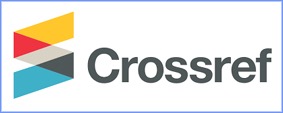Penggunaan Ragam Bahasa Gaul pada Kolom Komentar Tiktok @Fadiljaidi
DOI:
https://doi.org/10.29240/estetik.v5i1.3995Keywords:
Variety Language, Slang, CommentAbstract
Slang in 2021 is often used by the public, especially teenagers, this can happen due to the increasingly widespread use of social media. One of them is the Tik Tok application, during the pandemic this application was very popular with all Indonesian people. This study aims to: 1) Describe the forms of slang in @fadiljaidi's TikTok comment column 2) Describe the meaning of slang in @fadiljaidi's TikTok comment column. The data used is slang written in the comments column. Data Collection Techniques using the listen and note technique method, the author carefully reads the comments on the @fadiljaidi account and then records slang words as research data. The data analysis technique used an agih method, by explaining the language with the language itself. The results of this study are to classify slang into 3 forms: 1). Combining words: Nobar, Salfok, Gaptek, Mabar. 2) Reversing words with words: Ucul, Kane, Kuy, Ngab. 3) Phrases: Ngadi-ngadi, Ngakak banget, Bengek, Gemoy, Gumush, Receh, Wadoeh, Mengcape
Downloads
References
Akyuwen, I., Sasabone, C., & Tabelessy, N. (2020). Ragam Bahasa Gaul Dalam Media Sosial Facebook Remaja Negeri Passo Kota Ambon. Mirlam: Jurnal Pendidikan Bahasa Dan Sastra Indonesia, 1(1), 93–102. https://doi.org/10.30598/mirlamvol1no1hlm93-102
Azizah, A. R. (2019). Penggunaan Bahasa Indonesia dan Bahasa Gaul di Kalangan Remaja. Jurnal SKRIPTA: Jurnal Pembelajaran Bahasa Dan Sastra Indonesia, 5(2), 33–39.
Fahmi Nur Fawaid, Ho Ngoc Hieu, Rahmawati Wulandari, D. I. (2021). Penggunaan Bahasa Gaul pada Remaja Milenial di Media Sosial. Jurna Literasi, 5(1), 64–76.
Handika, K. D., Sudarma, I. K., & Murda, I. N. (2019). Analisis Penggunaan Ragam Bahasa Indonesia Siswa dalam Komunikasi Verbal. Jurnal Pedagogi Dan Pembelajaran, 2(3), 358. https://doi.org/10.23887/jp2.v2i3.19284
Herpanus, Tedi Suryadi, P. A. (2019). Analisis Kesalahan Berbahasa pada Surat Resmi di Desa Tanjung Sari Kecamatan Ketungau Tengah Kabupaten Sintang Periode Tahun 2015-2019. Jurnal Kansasi, 4(124–134).
Iswatiningsih, D., & Pangesti, F. (2021). Ekspresi remaja milenial melalui penggunaan bahasa gaul di media sosial. KEMBARA: Jurnal Keilmuan Bahasa, Sastra, dan Pengajarannya , 7(2), 254–267.
Oktavia, W., & Hayati, N. (2020). Pola Karakteristik Ragam Bahasa Istilah pada Masa Pandemi Covid 19 (Coronavirus Disease 2019). Tabasa: Jurnal Bahasa, Sastra Indonesia, Dan Pengajarannya, 1(1), 1–15. https://doi.org/10.22515/tabasa.v1i1.2607
Reza Ertika, Dian Eka Chandra W., dan I. D. (2019). Ragam Bahasa Gaul Kalangan Remaja di Kota Bengkulu. Jurnal Ilmiah Korpus, 53(1), 84–91.
Downloads
Published
How to Cite
Issue
Section
Citation Check
License
Copyright (c) 2022 Badrotun Nikmah

This work is licensed under a Creative Commons Attribution-NonCommercial-ShareAlike 4.0 International License.
Authors who publish with ESTETIK : Jurnal Bahasa Indonesia agree to the following terms:
- Authors retain copyright and grant the journal right of first publication with the work simultaneously licensed under a Creative Commons Attribution-NonCommercial-ShareAlike 4.0 International License (CC BY-NC-SA 4.0) that allows others to share the work with an acknowledgment of the work's authorship and initial publication in this journal.
- Authors are able to enter into separate, additional contractual arrangements for the non-exclusive distribution of the journal's published version of the work (e.g., post it to an institutional repository or publish it in a book), with an acknowledgment of its initial publication in this journal.
- Authors are permitted and encouraged to post their work online (e.g., in institutional repositories or on their website) prior to and during the submission process, as it can lead to productive exchanges, as well as earlier and greater citation of published work (See The Effect of Open Access).







